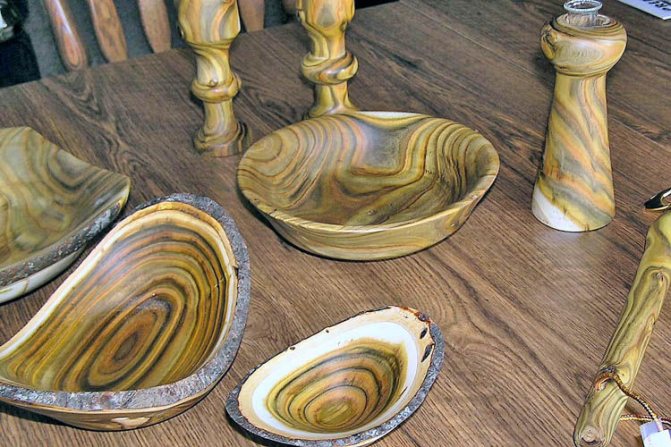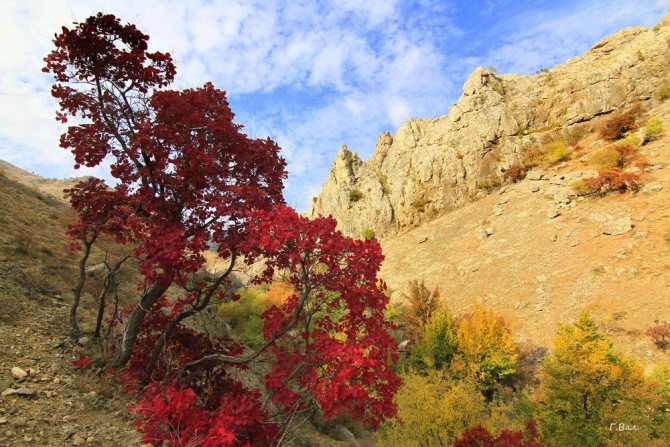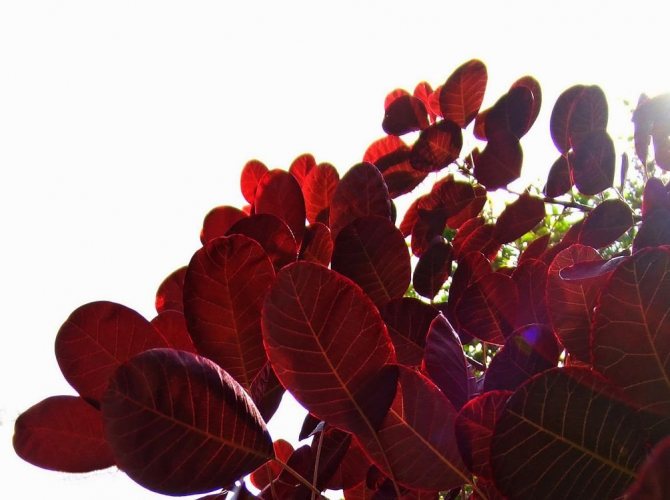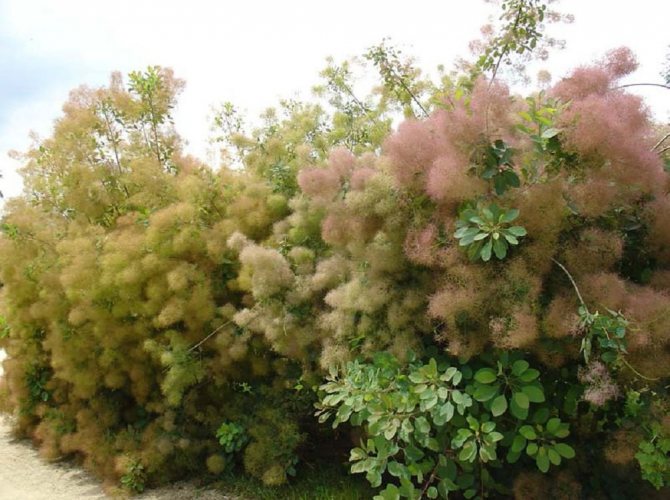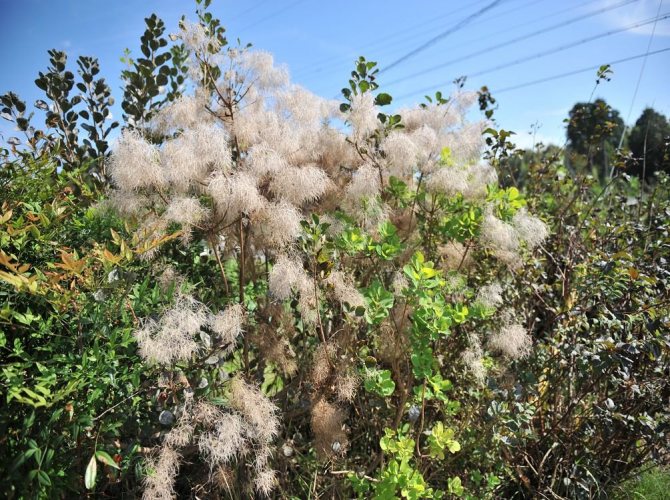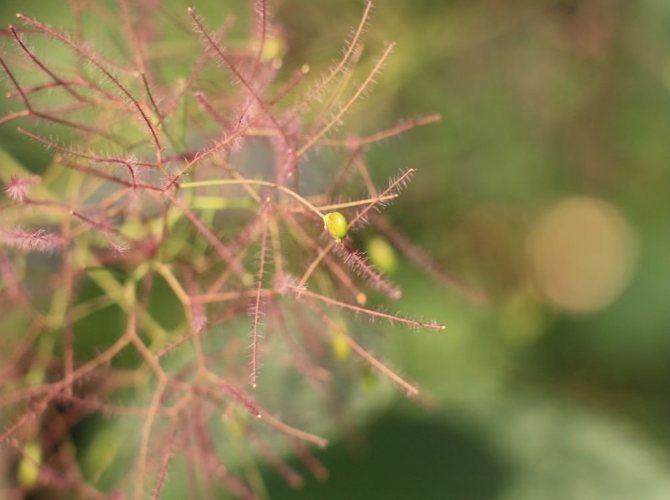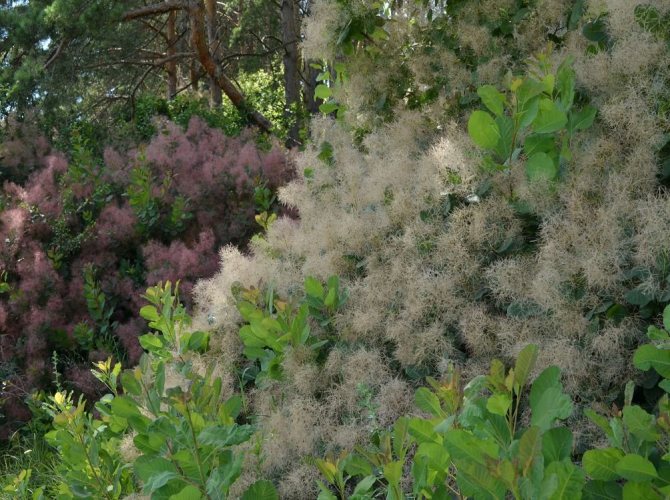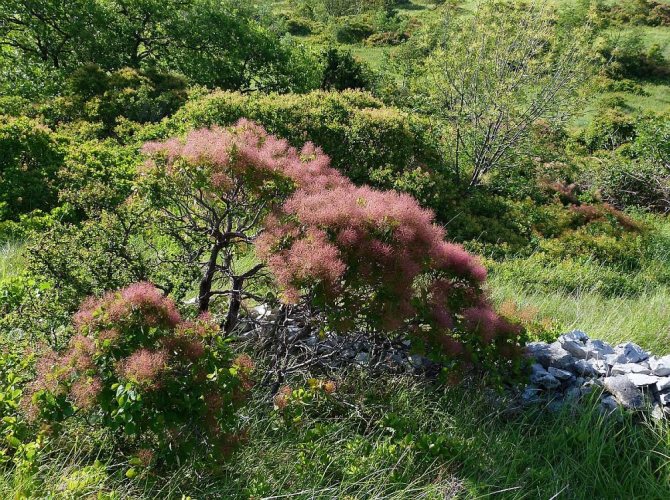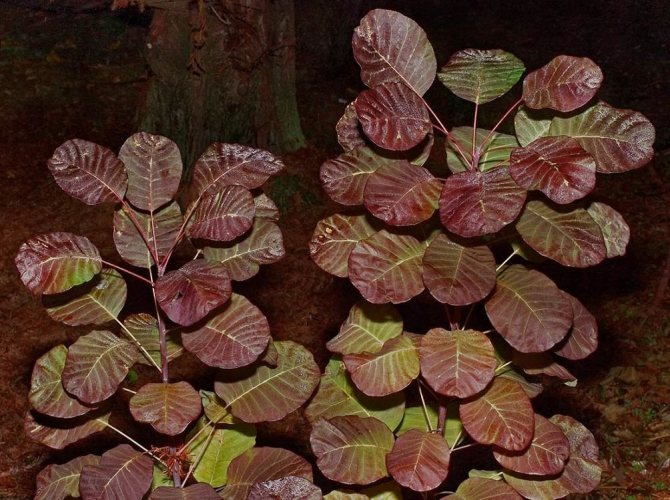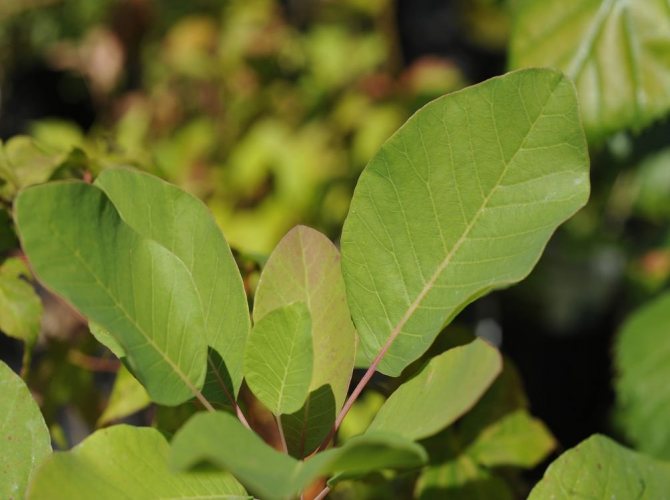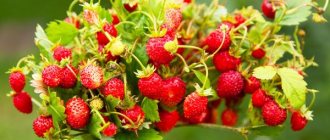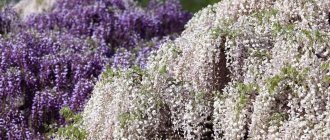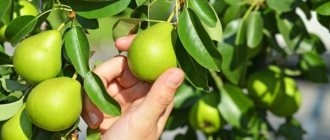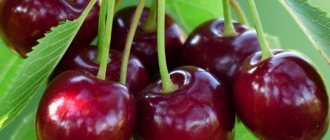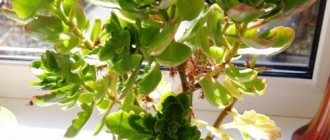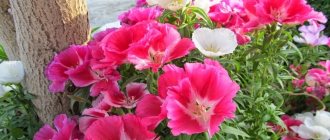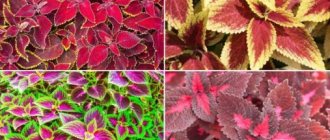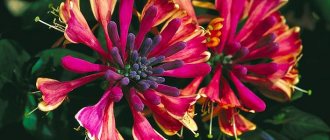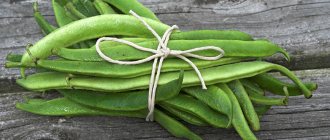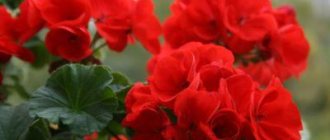The deciduous shrub or scumpia tree (Cotinus) is a member of the sumac family. In nature, such a plant can be found in areas with a temperate climate in Eurasia and in the eastern part of North America. This genus unites only 2 species. The Frenchman J. Tournefort, who was a botanist and doctor, called this plant "cotinus", in ancient Greece this was the name of the wild olive. Such a tree grew on Earth already in the times of the ancient world, perhaps this can explain the fact that it has quite a lot of names, for example: Venetian sumac, wig bush, yellowberry, tanning tree, smoky tree, etc. Today, such a plant is grown in On an industrial scale, it is used as a source of fizegin (orange and yellow dye for wool, leather and silk). The greenish-yellow wood of the scumpia is used for making crafts, and the foliage is used for tanning leather. Also, this plant is grown as an ornamental deciduous plant, decorating your garden with it.
Skumpia: variety of species and varieties
In shape, the scumpia resembles a tree or a powerful bush with unusual leaves, which change their color during the growing season. During the flowering period, the tree is so charmingly beautiful, even in the photo you can see the lightness and transparency of pink inflorescences that resemble a haze.
Scumpia (Cotinus) bears several names: sumac, tanning tree, wig tree or zheltinnik. The culture belongs to botanists to a separate genus of the Sumakhovye family. The distribution area is limited to areas of North Africa and southern regions of Europe, sometimes found in China.
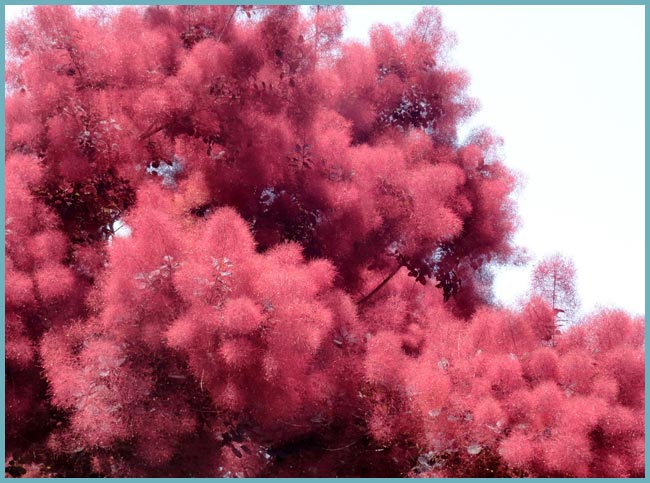
Flowering scumpia
Wood is widely used in industrial production:
- Scumpia wood has an extraordinary yellow-green hue, which makes the tree widely used for all kinds of crafts.
- Dyes for wool and silk fabrics are obtained from scumpia, dyeing yellow and orange.
- The leaves of the tree are used in the tanning industry for the manufacture of leather.
The tree has become widespread for the design of gardens and parks. Unusual flowering gives an aesthetic pleasure, it can be seen even in the photo - scumpia in bloom attracts the eye, so the plant is used in landscape design quite often. Sumakh reaches a height of 4 meters, lives with good care for over 100 years.
Features of the scumpia


Tanning scumpia, or ordinary scumpia, is a branched shrub, reaching a height of 150-300 centimeters or a tree five meters in height with a compact wide-oval umbrella-shaped crown. The peeling bark is colored brown. Bare light red or green stems, when broken, secrete milky juice. Simple alternate leathery petiolate leaf plates of obovate shape can be whole-edged or sparsely toothed. They are painted in dark red or green, which takes on a purple tint in autumn. Small pale green flowers are part of dense paniculate inflorescences, reaching 0.3 m in length.The flowering of the scumpia begins in May or June, at this time the stalks are lengthened, and a light red long pile appears on their surface, thanks to this one might think that the plant is covered with a pale red fog. The fruit is a small green drupe with a long stalk. The ripe fruit turns black. Scumpia can live for about 100 years.
Planting a smoky tree correctly: all the intricacies of growing a crop
Scumpia is considered a non-capricious plant among gardeners, however, for its favorable development, it is worth following certain rules:
- To plant a plant, you should choose the brightest, protected from the wind place. There should not be adult trees that can shade a young plant near the planting site of the scumpia seedling.
- The culture is very sensitive to waterlogging - high-lying groundwater can greatly harm the development of the root system of the scumpia. When planting, reliable drainage should be provided, and if its arrangement is not possible, the landing site should be chosen more dry and protected from the effects of groundwater.


Provide good drainage for the scum
- The root system of the scumpia is distinguished by its branching and considerable length, therefore, the plant is absolutely undemanding to the composition of the soil. But a young scumpia will grow faster on light soils with an alkaline reaction.
Advice! Avoid planting scumpia in areas with heavy acidic soils.
- In the first years of life, a young plant requires shelter in the winter. Planting scumpia in a permanent place can be carried out in spring and autumn, in the latter case, provided that the winters do not differ in severity and duration.
- The tree is usually planted with ready-made seedlings, the price of which is quite high, therefore, in order to prevent premature death of the plant, all the rules for planting a crop must be observed.
Let's remember the most important information
- Scumpia is a culture that grows in the wild not only on the American continent, but also in Eurasia, including in the south of Russia. Therefore, in our country (even in the central regions), it takes root well.
- There are two ornamental types of this shrub (or tree): tannery and American skumpia. The first type has many elegant varieties, the most beautiful of which are Royal Violet, Young Lady and Golden Spirit.
- When planting this bush, you need to remember: it cannot be planted in a lowland and on heavy soil that does not allow water to pass through. Also, the shrub is afraid of the through wind.
- The plant is unpretentious in care. He only needs regular forming pruning, and if the summer is abnormally dry and hot - infrequent watering.
Sumy: proper care in the Moscow region
Caring for a skumpia in the summer consists in gentle, but regular watering, weeding and feeding with nutrients. Treatment of the plant is necessary when diseases or pests that have attacked the tree are detected.
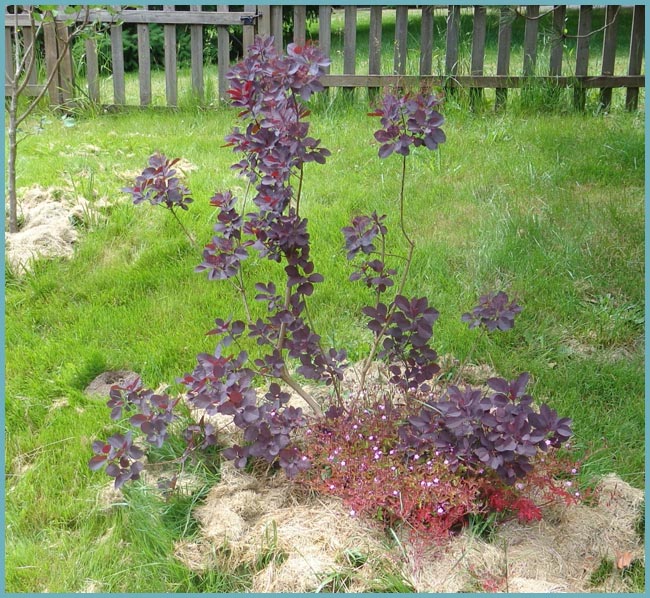

Young plant
In winter, the plant should be protected from frost. To do this, you can use shield structures that enclose the seedling, covering the trunk and the fence with snow. Such shelters must be disassembled with the onset of a warm time, otherwise the tree may rot under the shelter.
Advice! If, when removing the winter shelter, damaged branches of the scumpia are found, they should be pruned, processing with garden pitch.
An overgrown tree can be sanitized pruning:
- pruning on a "stump" will rejuvenate the tree and increase the branchiness of the bush;
- by regularly trimming the tree, you can give it a decorative shape.
Using
With cloud-like blossoms and decorative foliage, the scumpia is a welcome guest in any garden. Large trees are used in single plantings in the middle of the garden or along the perimeter of the site. Low bushes are suitable for creating hedges. Sometimes they are planted in rockeries or in a mixborder.The inflorescences can be dried and used for flower arrangements.
The plant contains a large amount of tannin, flavonoids, tannins, essential oils and organic acids. Leaves and shoots are brewed. Outwardly, a decoction in the form of lotions, compresses and baths is used to treat skin irritation, ulcers and abscesses. Mouthwash reduces gum inflammation, bleeding, periodontitis and gingivitis. Inside, the broth is taken to relieve pneumonia, gastrointestinal upset and poisoning.
Skumpia: feeding, feeding time, types of fertilizers used
Scumpia does not tolerate an excess of organic matter or complex mineral fertilizers. The plant, in principle, does not need additional feeding, it is enough to apply a complex of mineral fertilizers once a year (in spring), taking into account the size of the plant.


Apply once a year to keep the plant in bloom.
In some cases, if the plant develops poorly, gives insignificant growths, foliar top dressing with growth regulators can be carried out by spraying the product on green branches. Such processing should be carried out in the first half of summer, no later than August.
Skumpia tanning - a unique crop for a garden plot
Skumpia Leather (Cotinus coggygria) or Common — an exotic and original plant. The color of the leaves is very varied. The unpretentious culture is used in decorating gardens, group plantings and creating hedges.
It is a large shrub with a branched crown. The crown is shaped like an umbrella or a ball. In temperate latitudes, the height of the shrub does not exceed 5 meters. In hot climates it can grow up to 12 meters. The culture is very decorative thanks in large part to its foliage. Rounded leaves are green with a bluish tinge. From above they are matte, and from below they are covered with fluff. The veins are very clearly visible. With the onset of autumn, the foliage is noticeably transformed. Initially, the color along the veins becomes a deep red. And later it changes to crimson, red or red.
From the middle of summer, the flowering of the scumpia begins. Paniculate openwork inflorescences consist of small pinkish or yellowish flowers. After the fall of sterile flowers, the growth of pedicels occurs. As a result, pink threads are formed on the tree, similar to a fluffy cloud-like wig.
The fruits of the scumpia are small-sized drupes with a green color. As a result of maturation, the drupes turn black.
Reproduction of scumpia: methods and secrets
The following methods are used for reproduction of tanning skumpia:
- Breeding by rooting of cuttings - with this method, the bark is incised on the lower branch, and the branch is sprinkled with earth, pressing it with a hairpin. After a while, roots form at the site of the incision.
- Propagation by cuttings - cuttings with several buds are cut from a healthy plant. Some of the foliage is removed. The cuttings are planted in a greenhouse in light soil. During the summer, the young plant forms roots and can be used for planting.
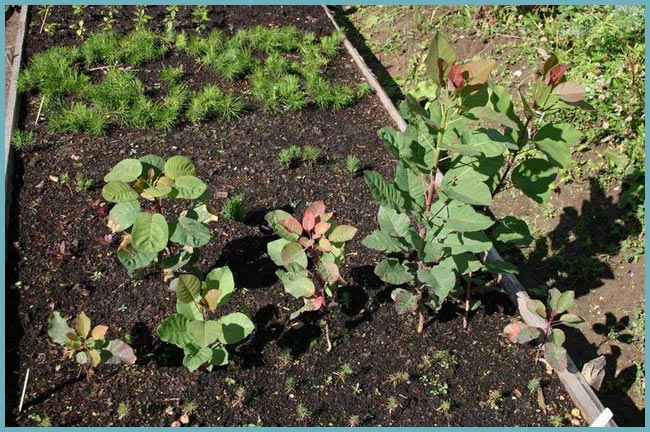

Scumpia cuttings - Seed propagation is a very difficult and troublesome method, it is rarely used, usually in breeding work. Plants grown from seeds do not retain their hereditary traits well.
Advice! When grafting, it is necessary to cut the cuttings from the green branches. For early rooting, cuttings can be treated with heteroauxin, epin, root.
The right choice of seedlings
Planting seedlings - it's not difficult, but the main thing is to choose a plant that is healthy and capable of quickly taking root in the conditions of the Moscow region and other regions of middle latitudes.
It is worth buying seedlings only in large nurseries. You need to take the plant, the root system of which is closed. So it can be planted in open ground at any time.
There should be no damage to the shoots and leaves.
The planting of the tanning follis purpureus scump should be carried out in an open, bright area. But at the same time, it must be carefully protected from wind and draft. Penumbra is allowed, but it should not completely cover the tree. The proximity of groundwater can lead to the death of the plant. Therefore, you need to plant it so that the drainage system is well prepared.
Diseases and pests of scumpia in the Moscow region
The scumpia has a wonderful feature - it is practically not damaged by pests and known diseases. Sometimes in winter, scumpia trees that hibernate without shelter can damage hares or mice by gnawing on the bark.
Otherwise, it is a very stable culture that grows well in central Russia, decorating city parks and private gardens with a decorative view.
Scumpia in the fall: video
Growing scumpia: photo
Application in landscape design
Scumpia Royal Purple is widely used in urban landscaping, in single and group plantings, as part of a variety of landscape compositions. It is readily grown in parks, squares and in personal plots. The Royal Purpl variety is planted in mixborders, as part of a variety of tree and shrub groups. It goes well with low-growing barberries, cotoneaster, spirea, conifers. The space between the bushes in the group is filled with herbaceous perennials.
Royal Purple can serve as a background, form a hedge, be a bright accent color in the garden. Scumpia Royal Purple has soil-protecting and reclamation properties, it is used to create protective forest belts and strengthen ravines.
Advice! Royal Purple should not be planted next to maples, robinia, poplar, Amur velvet, thorns, the substances secreted by it can destroy these plants.
Why scumpia does not bloom: causes and possibilities of elimination


It so happens that when cultivating skumpia tanning gardeners are faced with a situation where the shrub refuses to bloom. The flowers either do not appear at all, or after a short time they crumble, not having time to form beautiful paniculate inflorescences. Most often, the reason for this lies in insufficient care. So, flowering may be absent:
- due to an unsuitable planting site (the shrub grows in the lowlands or is too shaded);
- acidic heavy soils in the place of cultivation;
- excessive moisture due to the influence of groundwater or watering more often than 1 time in 2 to 3 weeks;
- fertilizer overdose (scumpia grows better in soil with natural nutrient levels).
In these cases, the situation will be corrected by correcting the conditions in which the plant grows.
If the flowers of the tanning skumpia quickly fall off after the appearance, without having time to please the colorful clouds of inflorescences, you should pay attention to their structure. There are two types of scumpia flowers:
- monoecious;
- dioecious.
The first variety is more common and implies that the flowers of the plant have both pistils and stamens. Such scumpies are self-sufficient, since pollination occurs within one bush.
Dioecious crops are divided into male plants, whose flowers have only stamens, and female plants, which have only pistils. For pollination of such skumpies, both specimens must be present. At the same time, shrubs with male-type flowers cannot boast of lush flowering and look quite modest.
Landing
The most important thing is to choose the right place and soil. All summer the seedlings are grown in containers. Disembarkation takes place in the fall.
Location
For disembarkation, the most illuminated open place is selected. Most suitable - on a slope or a small hill. The lowland will not work, there is groundwater passing close to the surface. The plant does not like excessive moisture.
It should be borne in mind that the skumpia grows on the sides by three to five meters.When space is limited, it is best to choose smaller potted shoots.
The soil
The skumpia is not picky about the ground. The soil is suitable for garden. It is better to choose light and airy.
The depth of the pit depends on the size of the root system of the shoot. It is recommended to add lime to it for better growth. Although the plant takes root in poor soil, it is better to cover the roots with soil with compost and humus.


Mr. Dachnik recommends: Skumpia is a handsome doctor
The plant is able not only to decorate any garden plot, it also has medicinal properties. Its healing qualities are studied in pharmacognosy.
Scumpia contains the following beneficial substances in large quantities:
- tannins;
- tannins;
- essential oils;
- organic acids.
Decoctions are prepared from greens and shoots. They are useful for the prevention and treatment of a variety of pathological conditions. They help with pneumonia, problems with the gastrointestinal tract, intoxication. They can also be used externally, make compresses, baths, lotions for skin rashes, purulent lesions. The tool is recommended to regularly rinse the mouth. It relieves inflammation, eliminates bleeding gums.
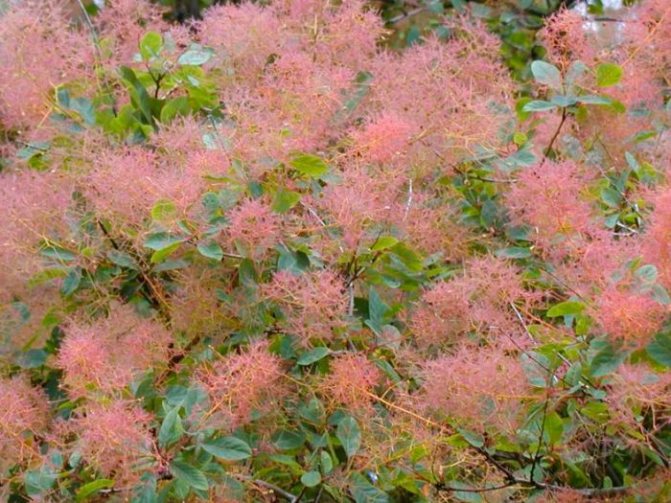

The deciduous shrub or scumpia tree (Cotinus) is a member of the sumac family. In nature, such a plant can be found in areas with a temperate climate in Eurasia and in the eastern part of North America. This genus unites only 2 species. The Frenchman J. Tournefort, who was a botanist and doctor, called this plant "cotinus", in ancient Greece this was the name of the wild olive. Such a tree grew on Earth already in the times of the ancient world, perhaps this can explain the fact that it has quite a lot of names, for example: Venetian sumac, wig bush, yellowberry, tanning tree, smoky tree, etc. Today, such a plant is grown in on an industrial scale, it is used as a source of fizegin (orange and yellow dye for wool, leather and silk). The greenish-yellow wood of the scumpia is used for making crafts, and the foliage is used for tanning leather. Also, this plant is grown as an ornamental deciduous plant, decorating your garden with it.
Where can I buy seedlings?
You can buy scumpia seedlings in nurseries, gardening shops. Also, seedlings are often ordered by mail or in online stores.
| Variety | Where can one buy | price |
| Royal Purple | Kennel "Kalina" (sent by Russian post) | 450 p. (30-40 cm) |
| Royal Purple | Online store "Gardens of Russia" | 381 p. |
| Skumpia leather | (sent by Russian post) | 950 RUB |
How to care for a skumpia? Whether to shelter for the winter?
Culture won't be a problem. All that is needed is timely pruning and abundant watering before rooting. Then you will have to water the shrub much less often. Excess water is detrimental to the scumpia. Mulching the soil in the near-trunk circle in the spring after warming up the earth will reduce the amount of watering.
Fertilizers are needed if the soil is too poor. The shrub loves both mineral and organic fertilizers. If the soil is highly fertile, then no additional fertilizing is required.
Shelter for the winter is necessary only for young plants. Adult specimens do not need this. Before covering, it is required to mulch the soil around the trunk. The mulch can be humus or peat. It is advisable to do this for both young and adult bushes.
The best cover is a nonwoven fabric. It is also good to tie the bush with spruce branches.
Care in the suburbs
You can plant a skumpia in the suburbs. Most varieties of the crop are winter hardy. It must be planted in a bright and well protected place from the winds. The soil must be well drained.
It is best to choose winter-hardy varieties. Also pay attention to seedlings in nurseries that have already survived several winters or at least one. There is an opinion that green-leaved varieties are more suitable for the conditions of Russia.
For the winter, the plant can freeze over the level of the snow cover. In order for it to endure the harsh winter, it is required to cover it with peat or foliage. Also tied with straw. Young bushes are covered with material. It will also be an excellent protection against hares and mice, which are not uncommon in the Moscow region. In the spring, frozen branches are carefully trimmed.
Watering is necessary only for young bushes. Especially not to forget about it on dry days. Adult specimens need watering only in dry weather.
An experienced gardener from one of the forums says that freezing usually occurs only in the first years of a plant's life. The bush can freeze slightly above the level of the snow cover. It depends on the quality of the shelter and the strength of the frost. The more snow the better.
Is it possible to grow a really beautiful tree, as in the photo below, in the conditions of Moscow and the Moscow region? This is from the "maybe yes, maybe not" area. The seedlings offered by the nurseries are adapted to the conditions of the European part of Russia and really grow well up to an average height, but it is difficult to say about a very tall tree. If you are lucky and there will be no severe frosts in the first years of the plant's life - perhaps.
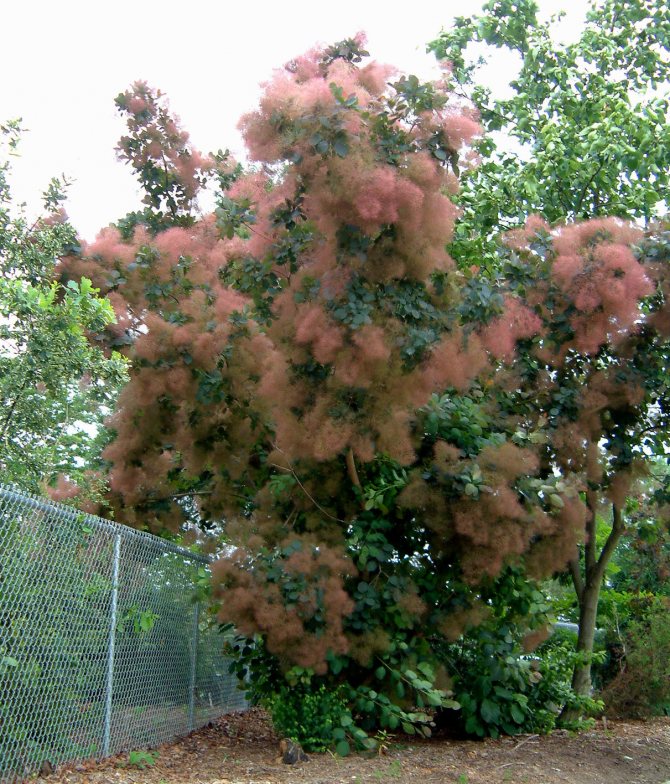

Chemical composition
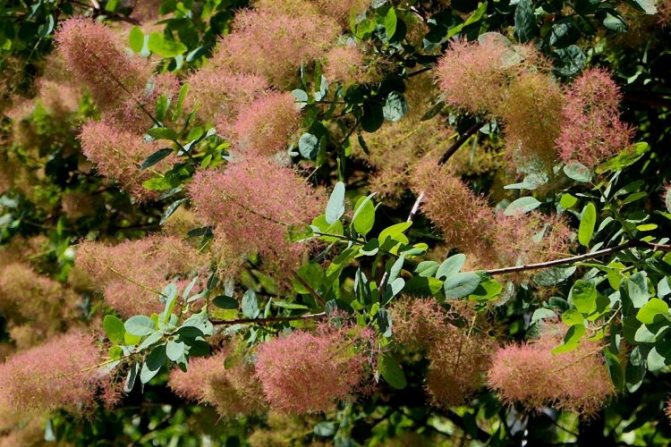

The beneficial properties of Skumpia tannery are due to its good chemical composition, which includes the following components:
- essential oil (limonene, myrcene, α-pinene, etc.);
- tannins (tannin, penta-galloyl-glucose, etc.);
- Sahara;
- gallic acid;
- flavonoids (fizetin, fustin, etc.);
- vitamins (carotene, E, C, etc.).
general description
Scumpia belongs to the Sumakhov family and is either a shrub or a relatively low-growing tree up to 5-6 m high. Some specimens can reach a height of 8 m. The natural habitat is the southern regions of Russia, North America, the Mediterranean, the Himalayas. Prefers open slopes and stony soils, limestones, dry embankments. It has been grown in culture for more than 350 years, during which time the plant was able to adapt to the climate of middle latitudes. Today, its lush bushes can often be found in the Moscow region, and in Western Siberia, and in more northern regions.
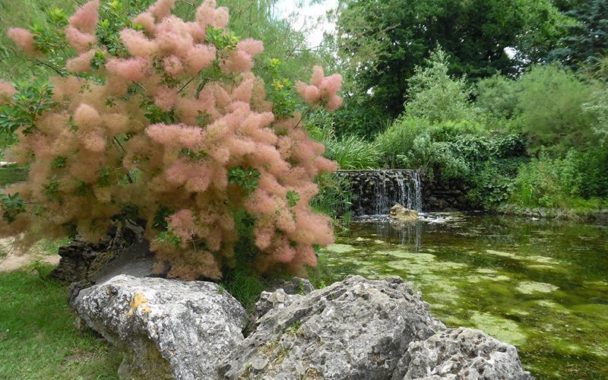

The crown of shrub representatives has a broad-oval spherical, and in trees - an umbrella-shaped shape. The type of wintering is deciduous, leaves are ovoid or obovate. The length of the leaf plate is 4-8 cm, the top is notched, the base color is green with a bluish tint.
With the onset of flowering, the crown is covered with many small paniculate yellow or greenish inflorescences of a nondescript appearance, but after the panicles have faded, they are covered with fine colored hairs and become like a smoky cloud. At this time, the crown of the scumpia takes on an unusual and very decorative look, as if a lush curly wig was put on a tree. The color of the "cloud", depending on the species and variety, can be pink, muted purple, orange or deep red.
Despite the compact size of the tree, it is long-lived and can grow in one place for up to 100 years!
How to choose the right seedlings when buying
Preference should be given to large nurseries, where the plants are looked after by professionals.
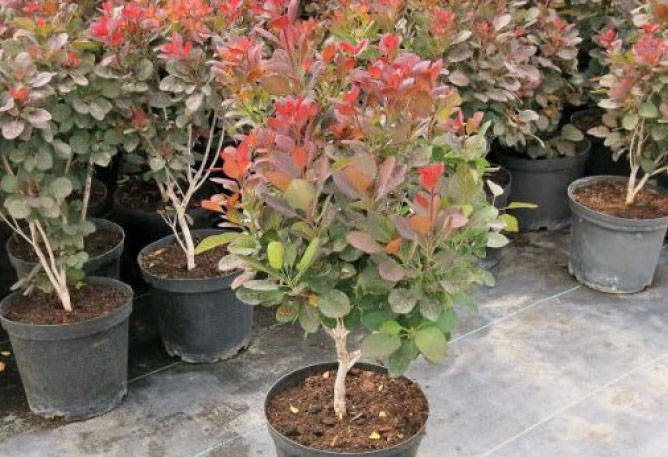

When examining a seedling, it is necessary to evaluate the trunk and shoots.
Damaged bark and dry buds indicate the non-viability of the individual.
It is advisable to buy seedlings with a closed root system. They can be planted even after some time after purchase.
When buying a plant with an open root system, you need to examine the roots. They should be slightly shorter than the aerial part, without rot and breakage. Plants are planted in the ground immediately after purchase.

